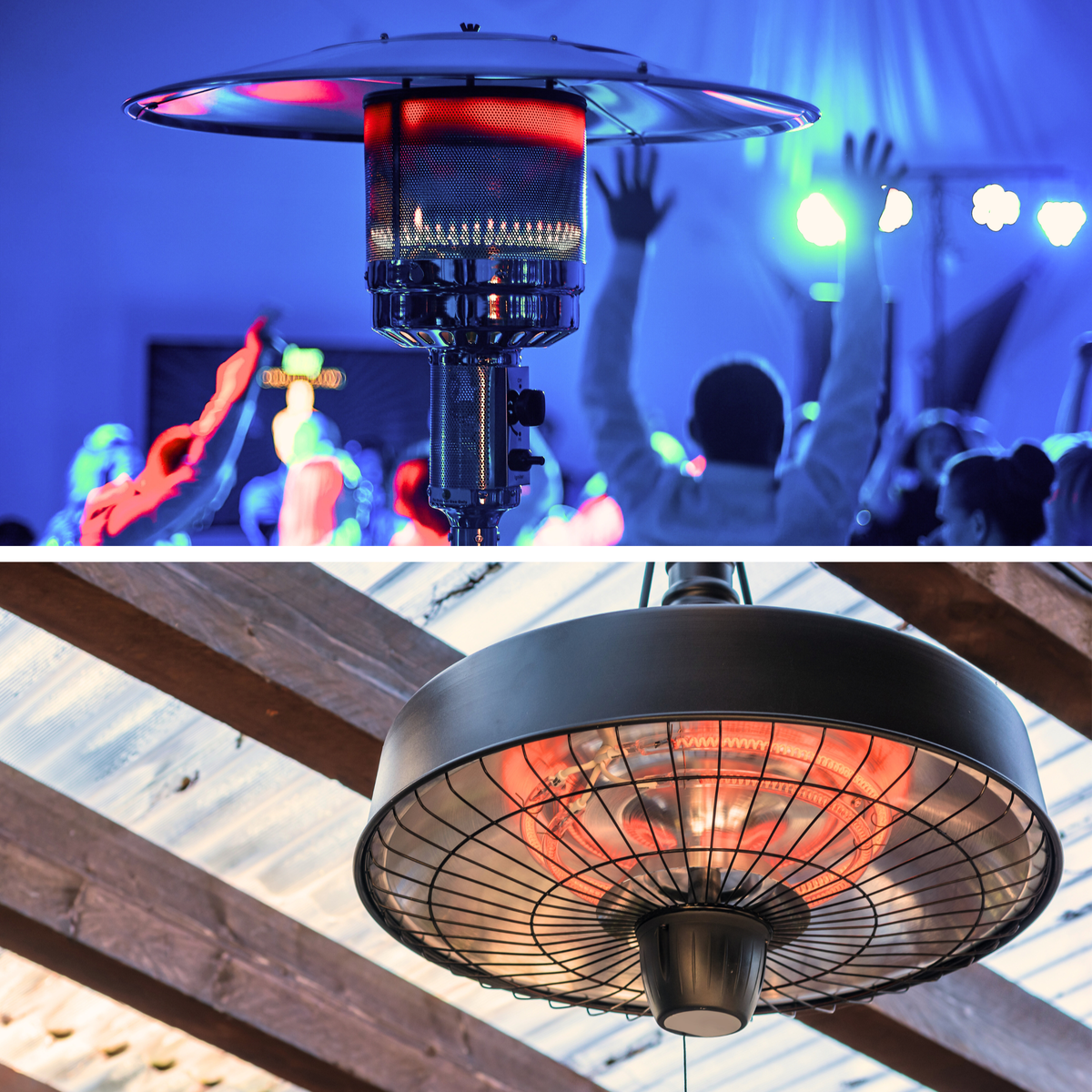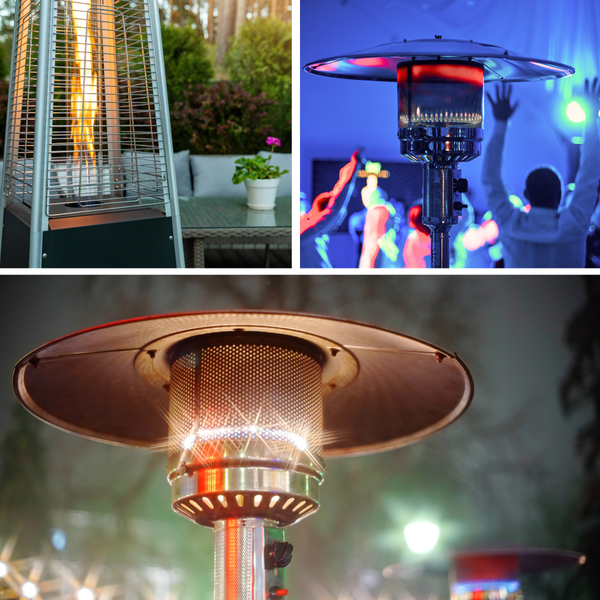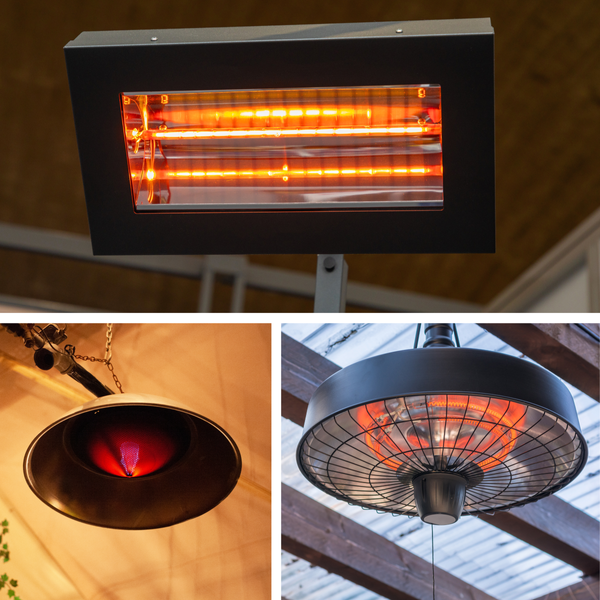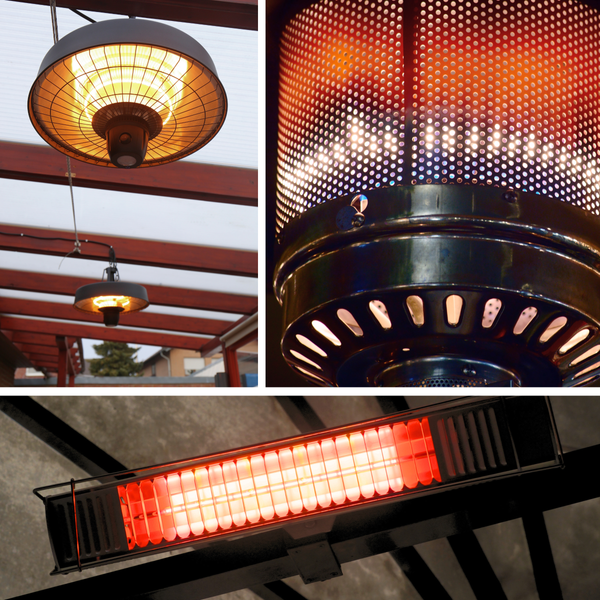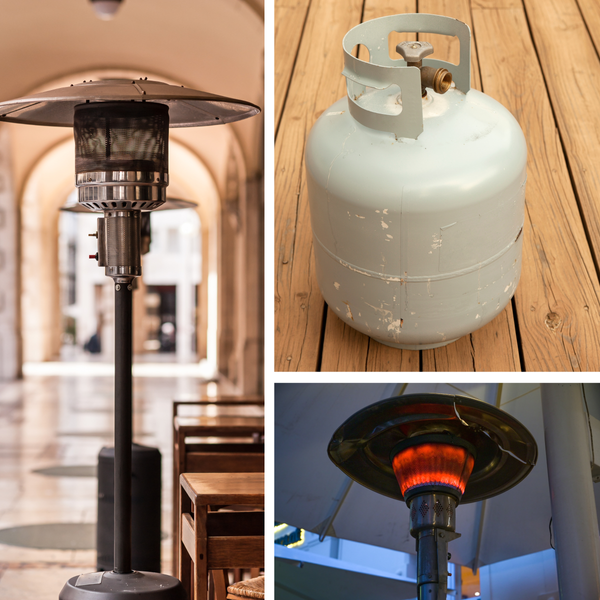Outdoor living spaces have become extensions of our homes, where we entertain, relax, and enjoy the fresh air. As the seasons change, maintaining the comfort of these spaces is essential, and patio heaters have become a popular solution. But with various types of heaters available, a common question arises: do patio heaters need to be vented? This informative article will explore the answer in detail.
Key Takeaways:
- Understanding the ventilation requirements for different types of patio heaters is crucial for safety and efficiency.
- Electric patio heaters generally do not require venting, while propane and natural gas heaters do.
- Proper installation and adherence to safety guidelines are essential to prevent hazards such as carbon monoxide poisoning.
Understanding Ventilation and Patio Heaters
Ventilation is a critical factor when considering the use of a patio heater. The primary purpose of venting is to allow the safe expulsion of exhaust gases and to ensure there is an adequate supply of oxygen for combustion. Most patio heaters are designed for outdoor use where ventilation is naturally abundant. However, the need for additional venting largely depends on the type of heater you choose.
Electric patio heaters are a popular choice for many homeowners. These heaters convert electricity into heat without any combustion, which means they do not produce any exhaust gases. As a result, electric patio heaters do not require venting. This makes them suitable for both outdoor and indoor use, provided they are designed for the specific environment.

Propane and Natural Gas Heaters: Ventilation is Key
When it comes to propane and natural gas patio heaters, the situation is different. These heaters burn fuel to generate heat, which means they produce combustion byproducts, including carbon monoxide, a colorless and odorless gas that can be dangerous in enclosed spaces. Adequate ventilation is necessary to prevent the buildup of this gas and to ensure the safe operation of the heater.
Propane patio heaters are often portable, making them a versatile option for outdoor heating. They use propane tanks that can be easily replaced or refilled. While these heaters are designed for outdoor use, they should never be used in enclosed areas without proper ventilation. Even on a covered porch or screened-in porch, it is important to ensure there is enough airflow to disperse any gas buildup.
The Importance of Following Manufacturer's Instructions
Each outdoor heater comes with a set of manufacturer's instructions that outline the specific requirements for safe operation, including ventilation. It is crucial to follow these guidelines to ensure safety and to prevent any potential hazards. The instructions will detail whether your new patio heater requires a permanent gas line or if it can operate with a portable gas tank.
For natural gas patio heaters, which are often connected to a home's gas supply, professional installation is recommended. These heaters may require a permanent gas line and should be placed in an area with proper ventilation to prevent gas buildup. It is also important to have a fire extinguisher nearby as a safety precaution. Sure, here are two new sections for your article:
Electric Heater Options for Outdoor Patios
Electric heaters are a versatile and convenient option for those looking to warm up their outdoor patio without worrying about the complexities of ventilation. Unlike propane heaters or natural gas patio heaters, electric heaters do not emit combustible by-products, which means they can be used in enclosed areas without the same level of risk. They come in various styles, including freestanding, wall-mounted, and tabletop models, making them a valuable investment for any patio area.
When considering an electric heater for your outdoor space, it's essential to assess the square footage you wish to heat to ensure you select a unit with the appropriate power output. Electric heaters are also a safer alternative to propane and natural gas heaters as they eliminate the need to store a propane tank or install gas lines. However, they do require a reliable electrical source, and it's always recommended to follow the manufacturer's instructions for installation and use to avoid any potential fire hazard.

Energy Efficiency of Natural Gas Patio Heaters
Natural gas patio heaters are becoming increasingly popular due to their cost-effectiveness and energy efficiency. Unlike propane heaters, a natural gas heater is connected to your home's gas line, providing a continuous fuel supply. This means you won't have to worry about running out of fuel during your outdoor gatherings. Moreover, natural gas is typically less expensive than propane, making it a budget-friendly option for those who enjoy spending ample time outdoors. By choosing a natural gas patio heater, you're not only ensuring a warm and inviting patio space but also making an economically smart decision.
In addition to being cost-effective, natural gas heaters are known for their lower carbon emissions compared to other fuel types. This makes them an environmentally friendly choice for heating your outdoor space. When selecting a natural gas patio heater, it's essential to follow the manufacturer's instructions for installation to ensure optimal performance and safety. Properly installed and maintained, these heaters can provide a comfortable temperature for your patio without the need for frequent refueling, all while keeping your energy bills in check.
Adapting Outdoor Heaters for Screened-In Porches
When it comes to heating a screened-in porch, outdoor heaters can be a game-changer, allowing you to enjoy the space even during cooler months. However, it's crucial to choose the right type of heater and follow safety guidelines. Portable heaters are a versatile option for a screened-in porch, as they can be moved to different areas as needed. Electric models are particularly well-suited for enclosed spaces since they don't emit harmful gases and don't require ventilation like propane or natural gas heaters do.
For those who prefer the warmth provided by a propane grill or heater, it's vital to ensure proper ventilation to prevent the buildup of carbon monoxide. Always adhere to the manufacturer's instructions regarding the use of propane heaters in enclosed spaces. Some models are designed specifically for indoor or semi-enclosed areas and come with built-in safety features such as oxygen depletion sensors. Remember, no matter the type of heater you choose, regular maintenance is key to ensuring the longevity and safety of your outdoor heating solution.

Safety Measures for Propane Heaters and Grills
Propane heaters and propane grills are popular choices for outdoor heating and cooking due to their portability and ease of use. However, safety is paramount when using these devices, especially in a patio area that may have combustible materials nearby. It's crucial to ensure that the propane tank is securely connected and that there are no leaks, which can be a significant fire hazard. Additionally, keeping the heater or grill at a safe distance from furniture and other flammable items is essential.
For those with a screened-in porch or a covered patio, it's important to note that using a propane heater indoors or in any enclosed area can lead to dangerous carbon monoxide buildup. Always check the cubic feet of the space and compare it with the manufacturer's instructions to determine if the area is sufficiently ventilated for the safe operation of your propane heater or grill. Remember, investing a little extra time in safety can prevent accidents and ensure that your outdoor gatherings remain warm and enjoyable.
Safety Concerns with Improper Ventilation
The consequences of inadequate ventilation can be severe. Carbon monoxide poisoning is a serious risk associated with the improper use of propane and natural gas heaters in poorly ventilated areas. Symptoms of CO poisoning include headache, dizziness, nausea, and in extreme cases, it can be fatal.
To ensure safety, it is essential to use a patio heater only as intended. Most patio heaters are designed for outdoor use and should not be used indoors or in enclosed areas where ventilation is insufficient. Additionally, keeping flammable materials away from the heat source and ensuring the heater is placed on a level surface can help prevent fire hazards.

Choosing the Right Patio Heater for Your Space
Selecting the best heater for your favorite outdoor spaces involves considering the size of the area you want to heat. Heat output, measured in British Thermal Units (BTUs), is an important factor. Larger spaces will require a heater with more heat output, while smaller or more enclosed areas like a covered patio or screened porch may need less.
Electric heaters are often preferred for smaller spaces or areas where installing a gas supply would be impractical. They are also a good choice for those who want to avoid the hassle of dealing with propane tanks or a permanent gas line. On the other hand, propane and natural gas heaters can provide more heat, making them suitable for larger spaces or for those who prefer a heat source that can potentially damage less to the environment.
Ventilation Tips for Covered and Screened Porches
For those with covered patios or screened porches, ventilation still plays a crucial role. While these areas provide some protection from the elements, they can also trap gases emitted by propane or natural gas heaters. It's important to ensure that there is enough open space to allow for proper airflow. If you're using multiple heaters, this becomes even more critical to prevent gas buildup.
In some cases, installing additional ventilation may be necessary to maintain a safe environment. This could include ceiling vents or fans to help circulate air. Always consult with a professional to determine the best ventilation strategy for your specific setup.

Maintenance and Safety Features
Regular maintenance is vital for the longevity and safe operation of your patio heater. This includes checking for any obstructions in the ventilation system, ensuring the gas supply is connected properly, and inspecting for any signs of wear or damage. Safety features such as automatic shut-off sensors and tilt-over protection are also important to look for when purchasing a new patio heater.
Proper ventilation is not only about safety but also about maintaining the efficiency of your heater. A well-ventilated area allows the heater to operate at its best, providing consistent and comfortable warmth to your outdoor space.
Summary
In summary, whether patio heaters need to be vented depends on the type of heater. Electric patio heaters do not require venting, while propane and natural gas heaters do, due to the combustion process and the risk of carbon monoxide poisoning. It is essential to follow the manufacturer's instructions, ensure proper installation, and adhere to safety guidelines to enjoy your outdoor space safely and comfortably.
FAQ Section
Q: Can I use a propane patio heater on a covered porch?
A: Yes, you can use a propane patio heater on a covered porch, but you must ensure there is adequate ventilation to prevent the buildup of harmful gases. Always follow the manufacturer's guidelines and consider the size and airflow of your covered porch.
Q: Are electric patio heaters safe for indoor use?
A: Electric patio heaters designed for indoor use are safe as they do not produce combustion gases. However, it is important to use the heater according to the manufacturer's instructions and to ensure it is appropriate for the size of the indoor space.
Q: How often should I perform maintenance on my patio heater?
A: It is recommended to perform maintenance on your patio heater at least once a year or according to the manufacturer's instructions. Regular checks should include inspecting for gas leaks, ensuring proper ventilation, and cleaning any debris from the heater's components.



